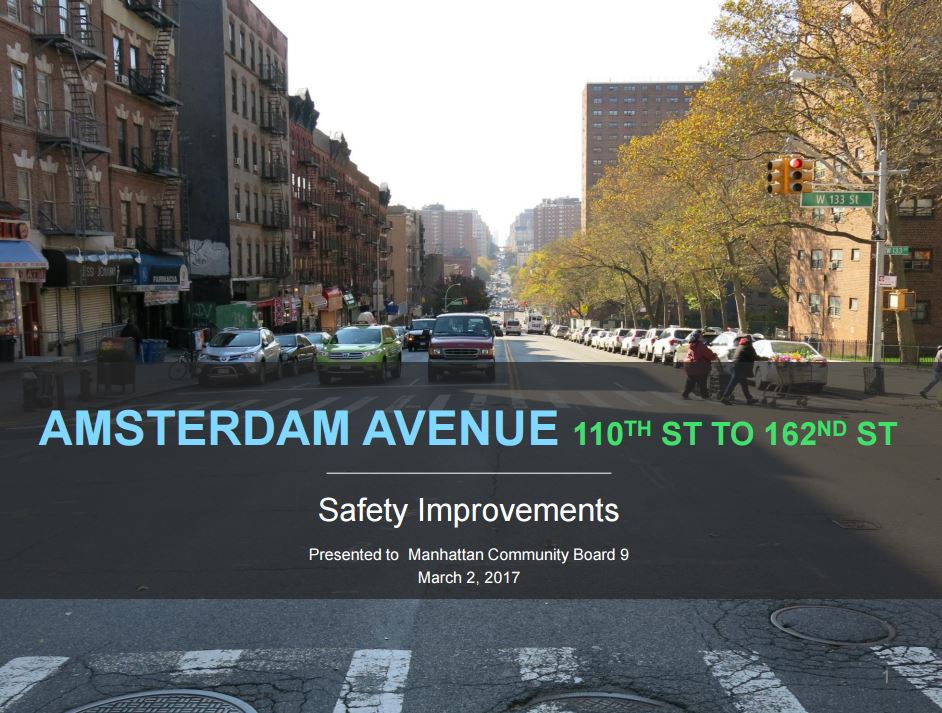NYC bicyclists will not be sufficiently protected from accidents with a painted bike lane on Amsterdam above 110 street
 People riding bikes in New York City decrease their risk of being seriously injured in a bike accident by 75% when they are using a protected bike lane. According to a 2014 DOT study, protected bike lanes have led to a decrease of 22% of pedestrian injuries and to a minor decrease of bicycle accident injuries despite a dramatic increase in bicycle traffic in the city. Recently a new DOT proposal to extend the Amsterdam Avenue protected bike lane with a painted bike lane above 110 street seems somewhat weak.
People riding bikes in New York City decrease their risk of being seriously injured in a bike accident by 75% when they are using a protected bike lane. According to a 2014 DOT study, protected bike lanes have led to a decrease of 22% of pedestrian injuries and to a minor decrease of bicycle accident injuries despite a dramatic increase in bicycle traffic in the city. Recently a new DOT proposal to extend the Amsterdam Avenue protected bike lane with a painted bike lane above 110 street seems somewhat weak.
The Amsterdam Avenue segment that runs from 110th street to 162nd street is a busy two way 4 travel lane corridor with no bike lanes. Columbia University, City College of New York, several senior centers as well as various commercial and residential buildings are located on this segment of Amsterdam Avenue.
Speeding, unsafe intersections and the absence of bike lanes are making the avenue unsafe for the community. Between 2010 and 2016, 4 pedestrians died on this segment of Amsterdam Avenue. Between 2010 and 2014 8 bicyclists and 28 pedestrians were severely injured.
On March 2nd, The DOT proposed to the Community Board 9 to remove one travel lane in each direction, to install left turn bays and bike lanes in both directions while leaving the parking lane on both curbs. The proposal was welcomed by the community board. However some members felt the DOT missed an opportunity to do better. They asked several times of the DOT representatives why they settled for a painted bike lane when a protected bike lane would be much safer for the community. Community members were not only worried for the lack of protection on the bike lane itself but also for some areas where the DOT proposed “sharrows”. Sharrows are share lanes where cars and bicycles share the road. The DOT representatives implied in their answer that political fights might delay the street redesign for years while a painted bike lane could be built in a few months. They also said that further improvements could come later. For them, it seemed a good compromise.
Next the DOT will present the plan to the Community Board 12 before presenting it for a vote to both Community Boards. If everything goes well, street redesign may start this summer and be finished by the end of the year. Read more in Street Blog
 New York Personal Injury Attorneys Blog
New York Personal Injury Attorneys Blog


